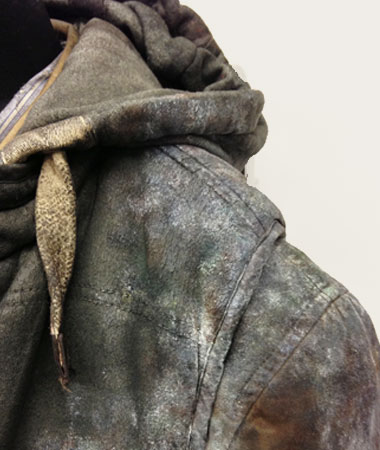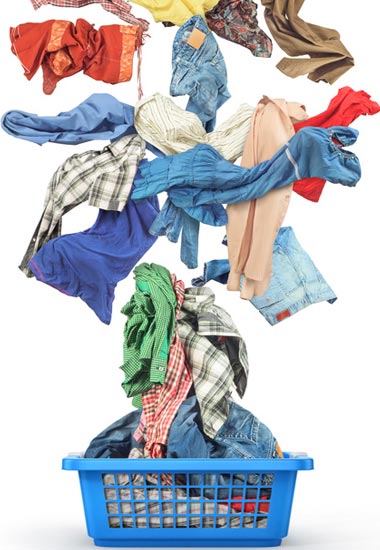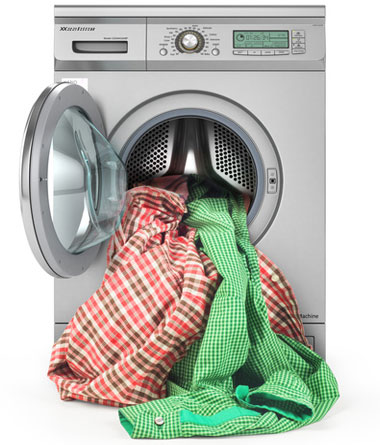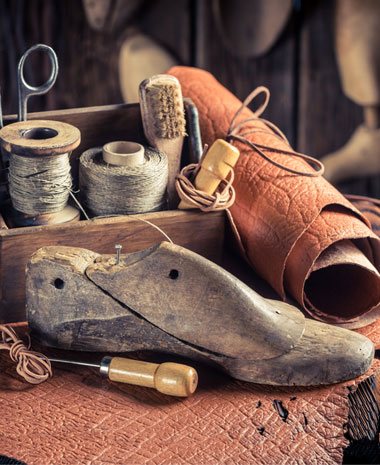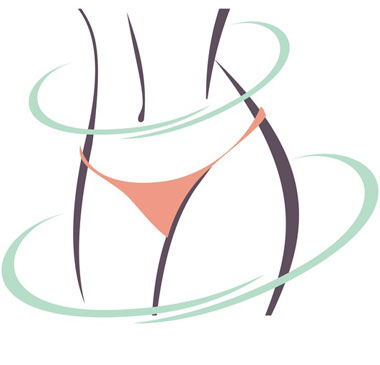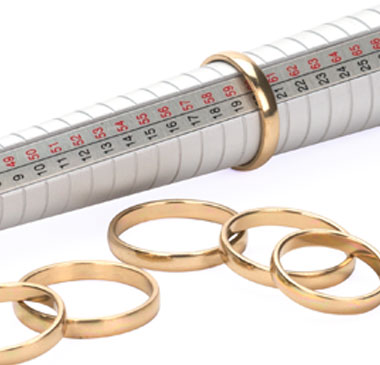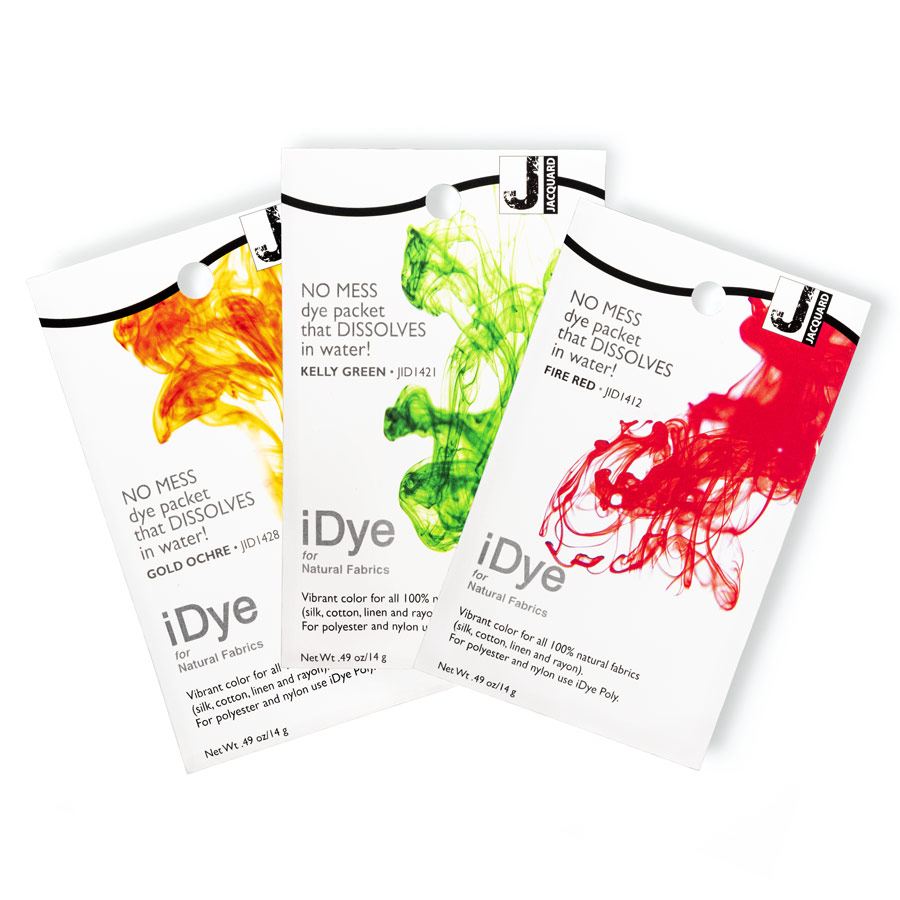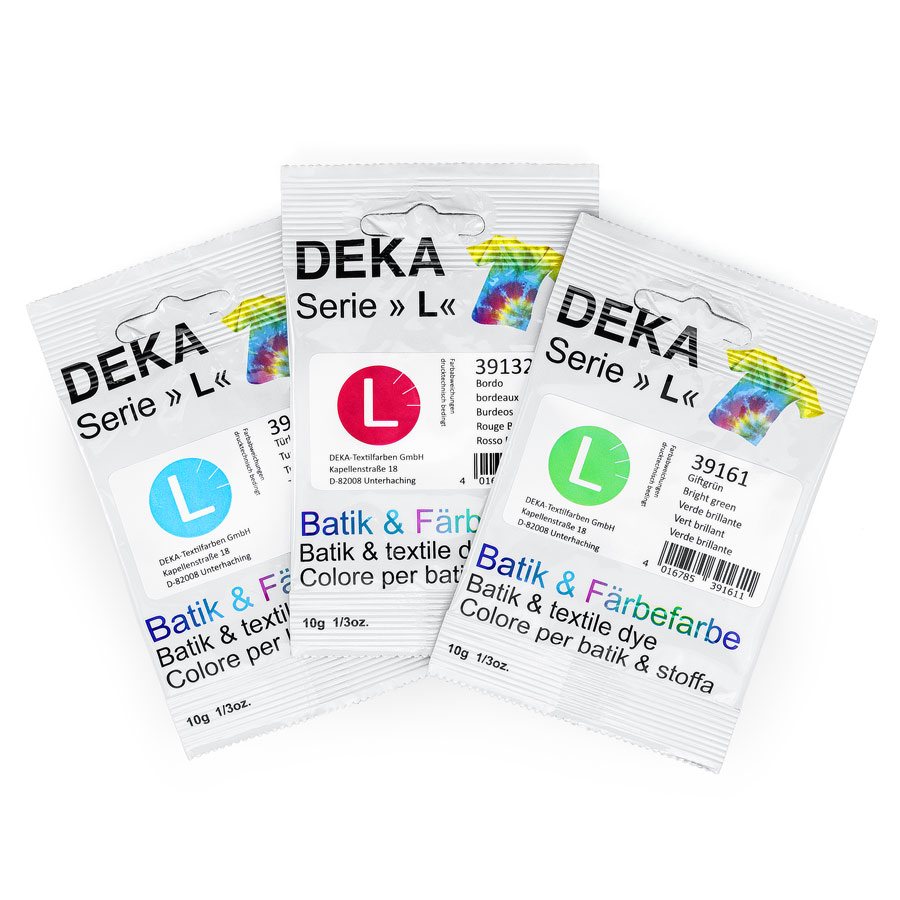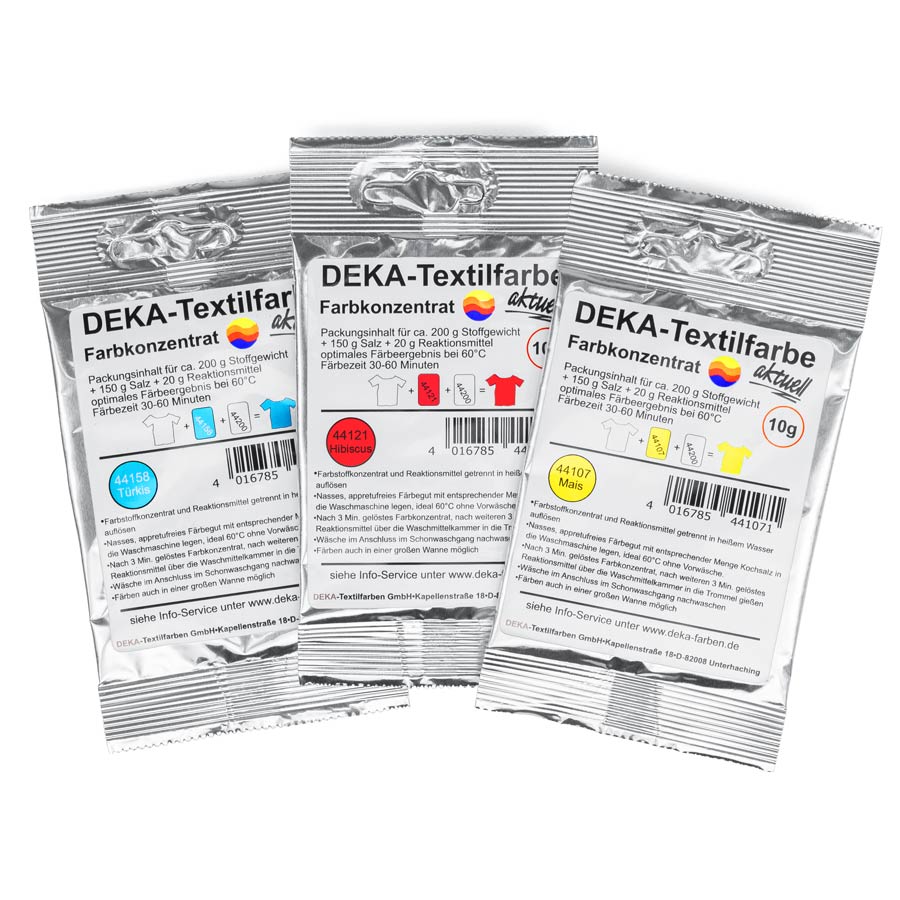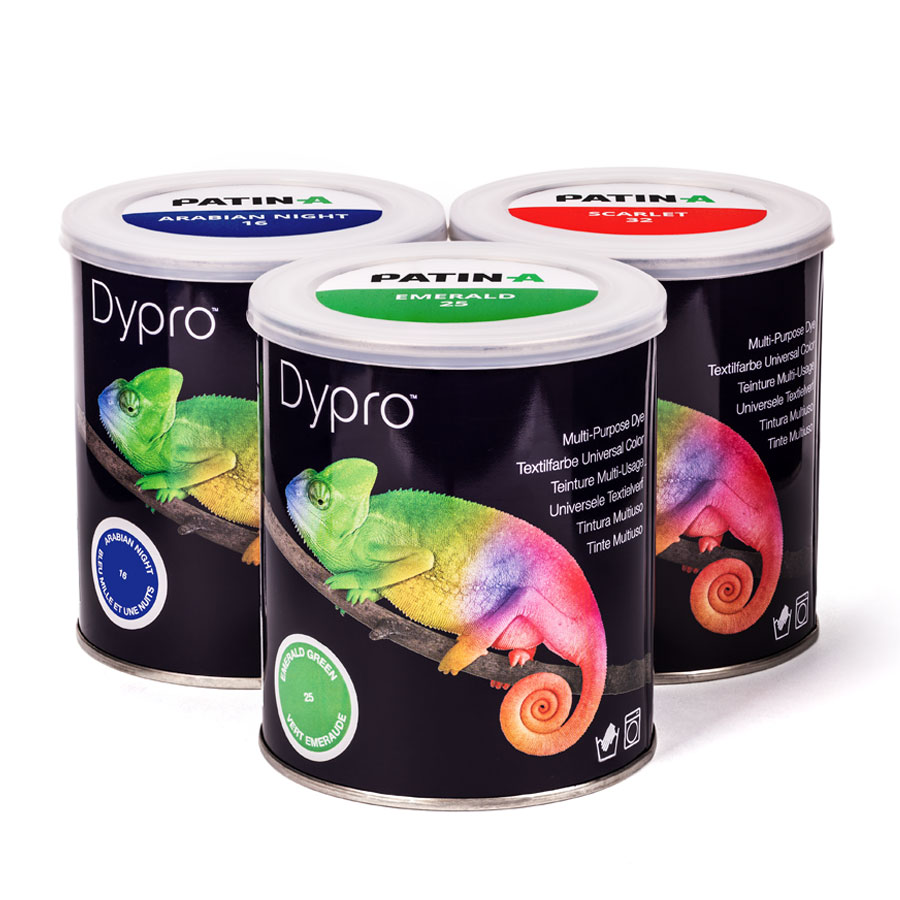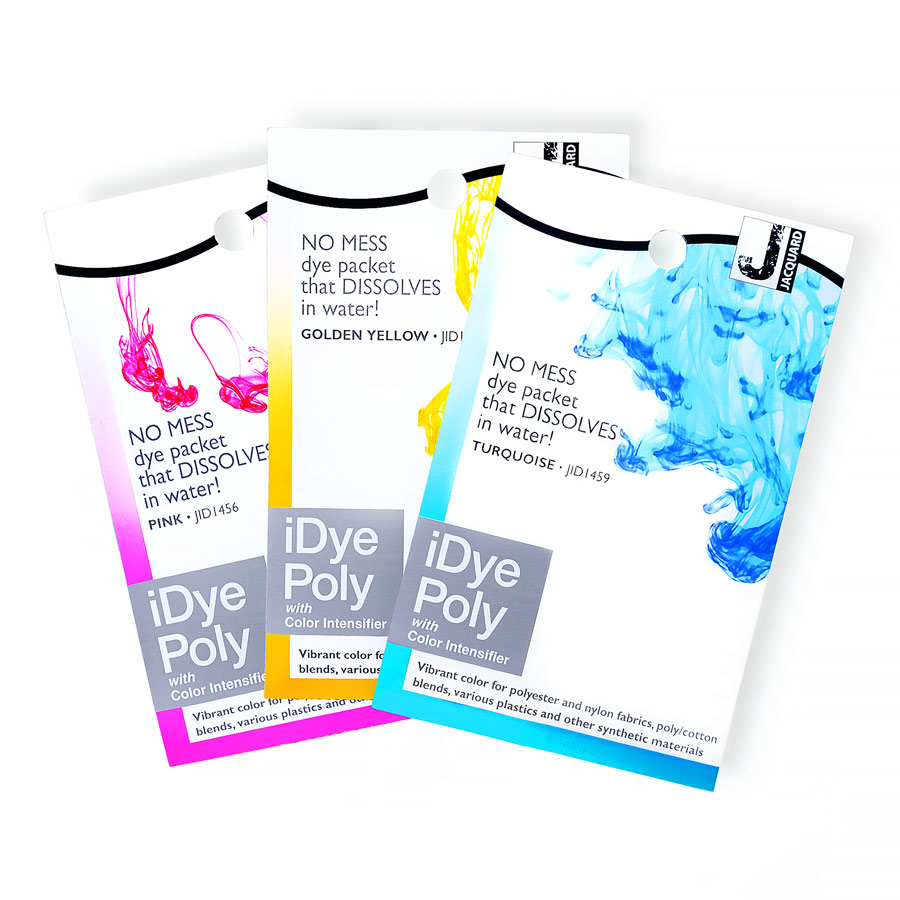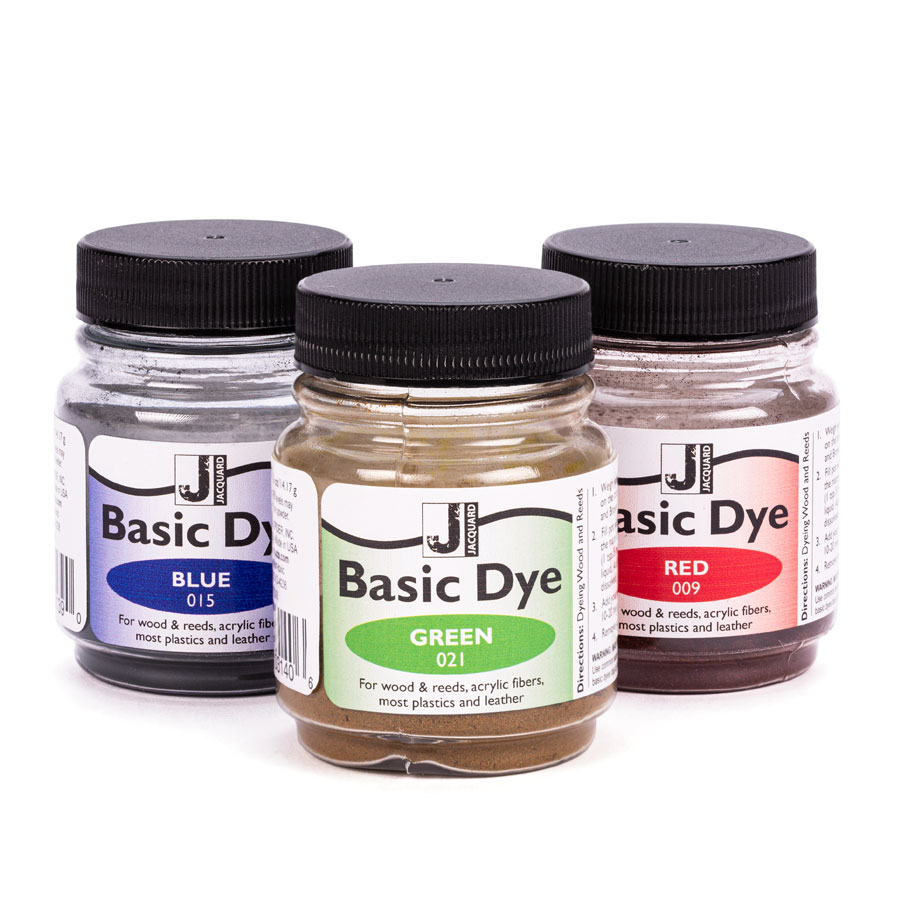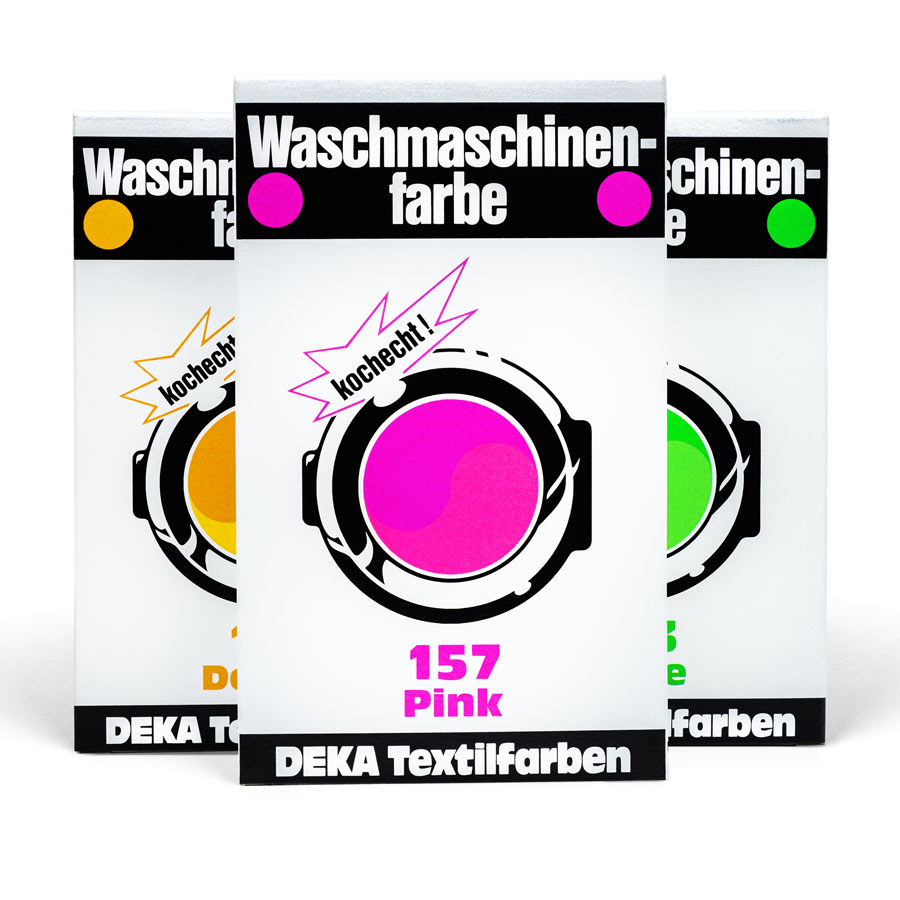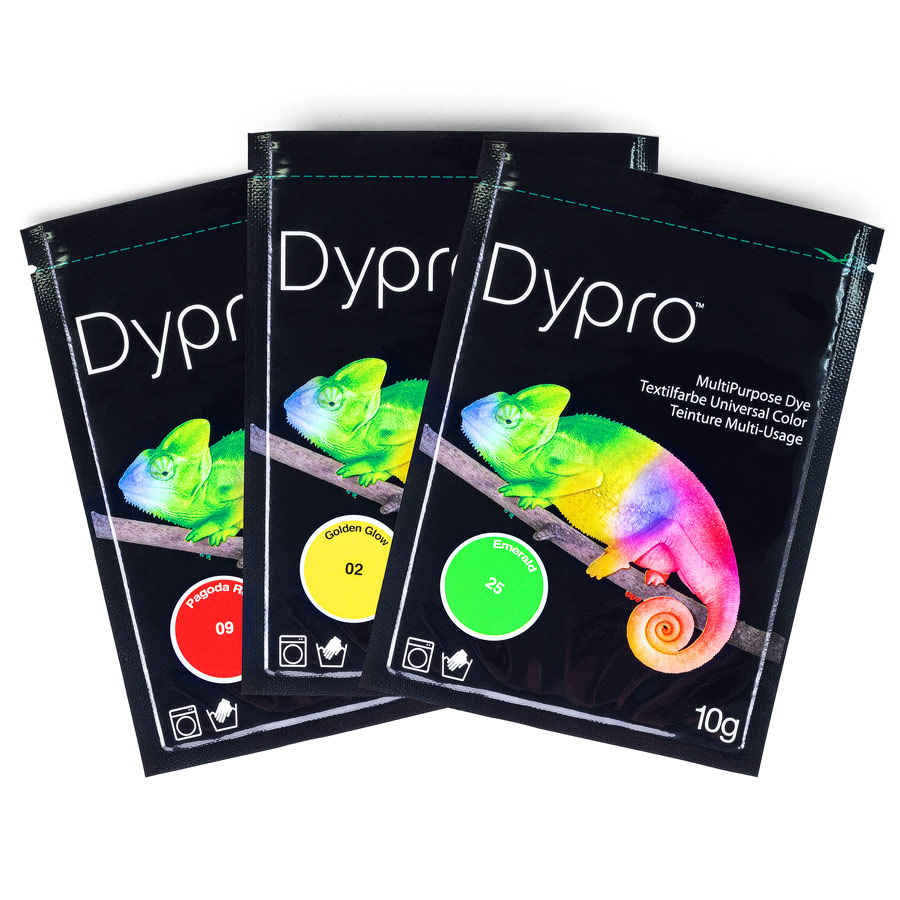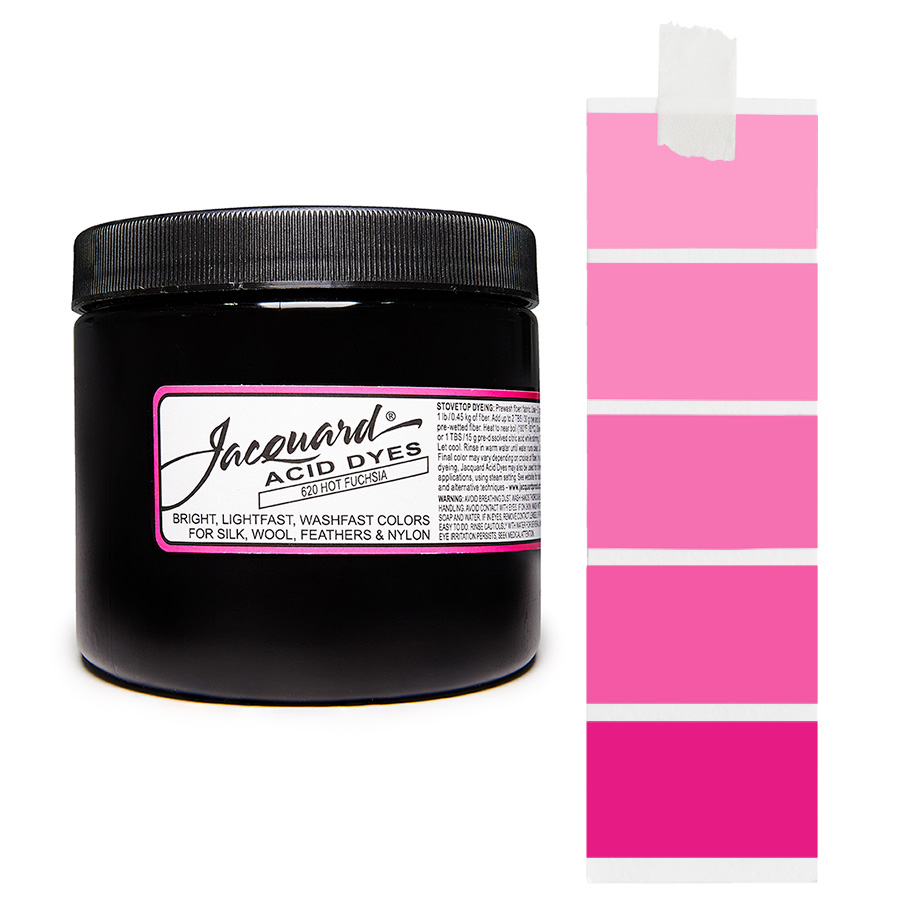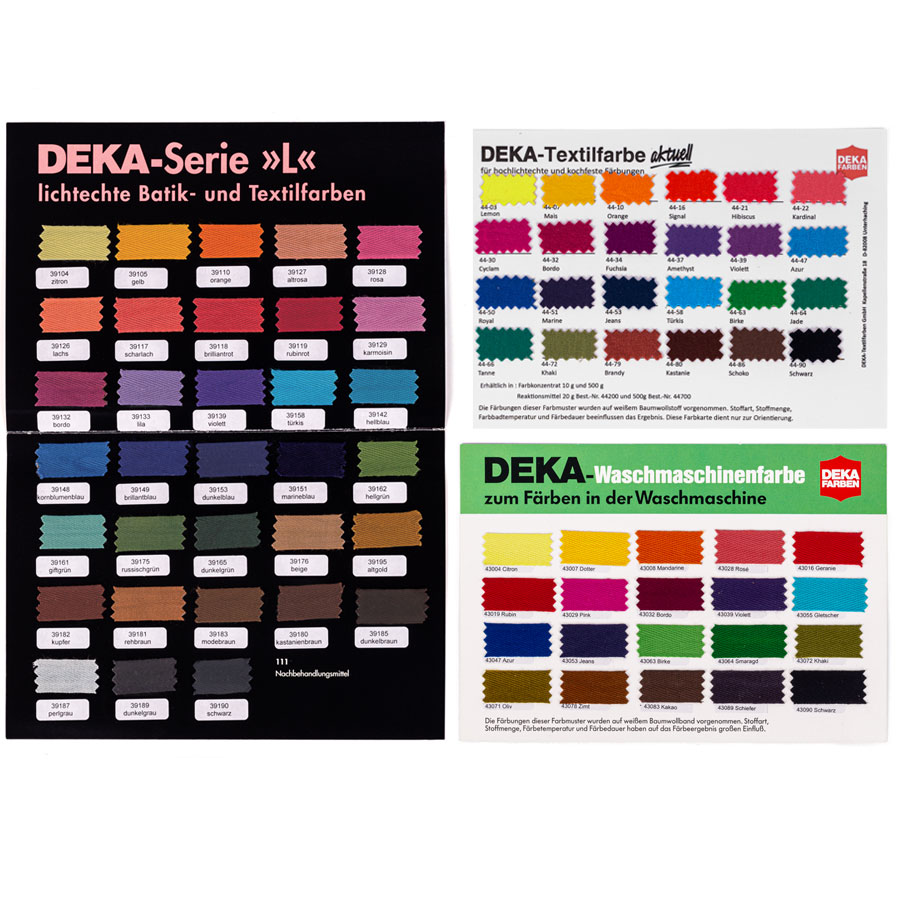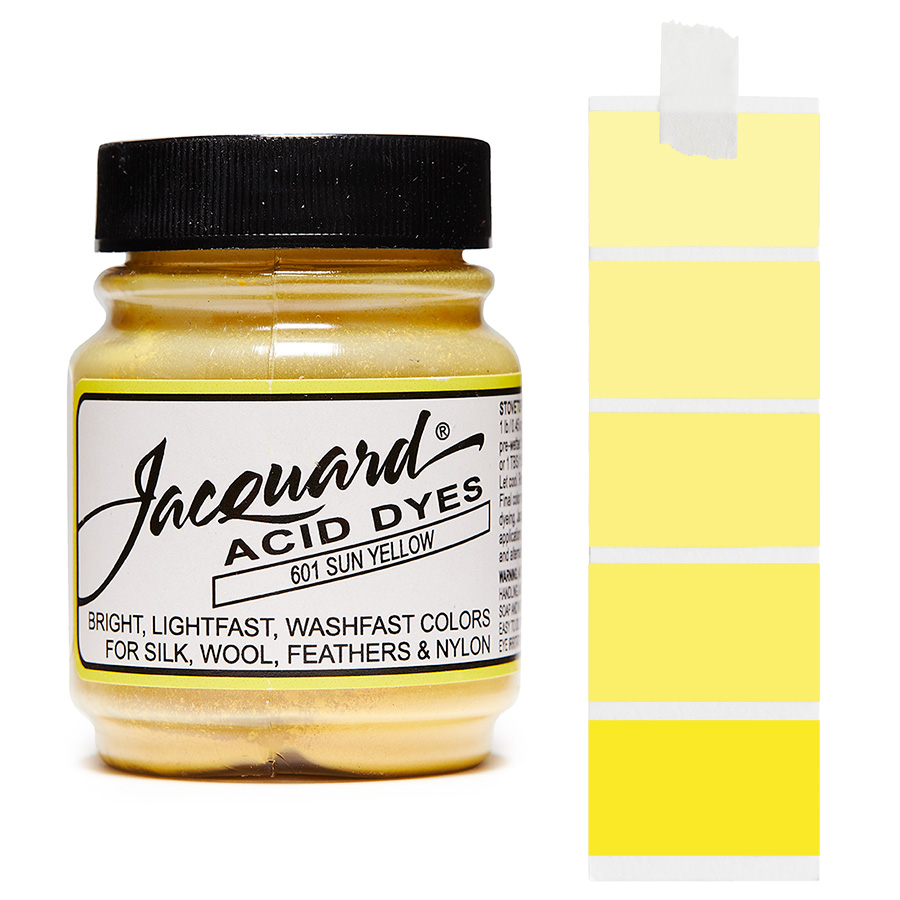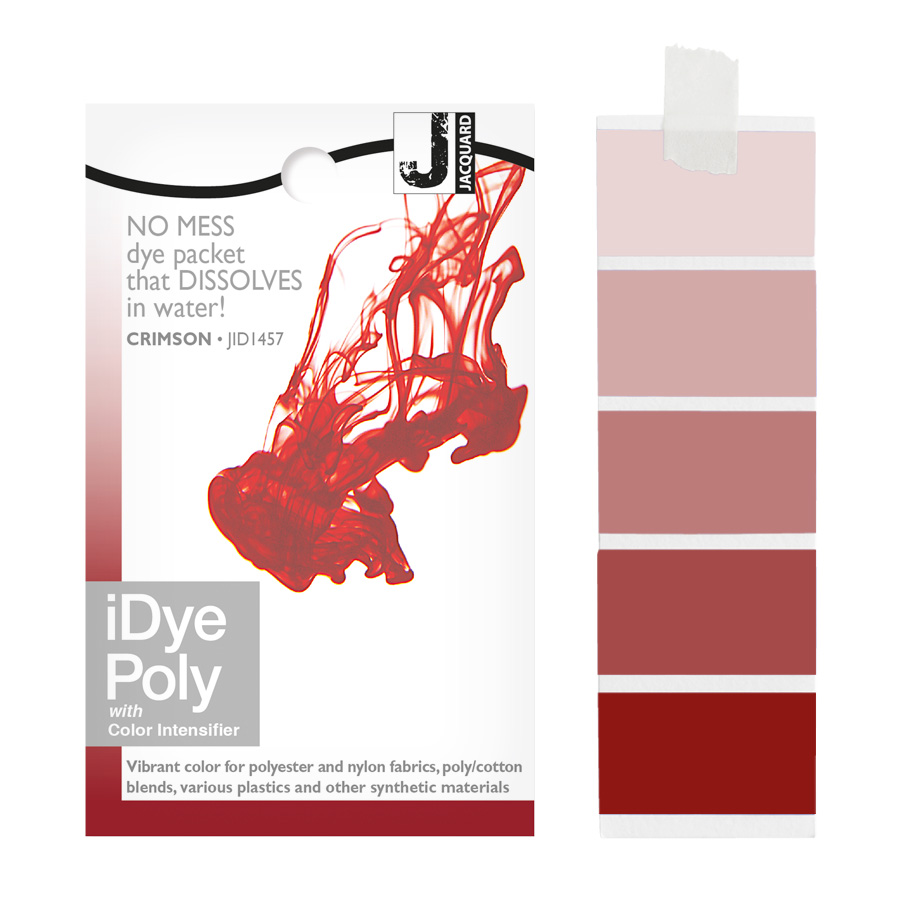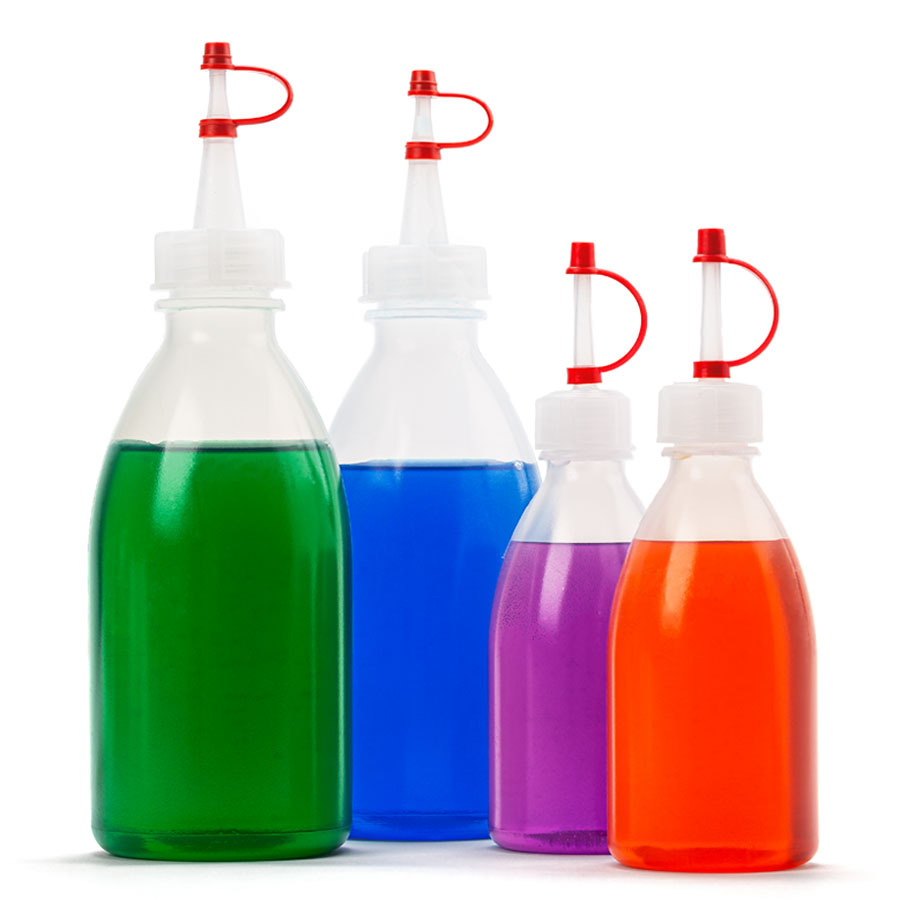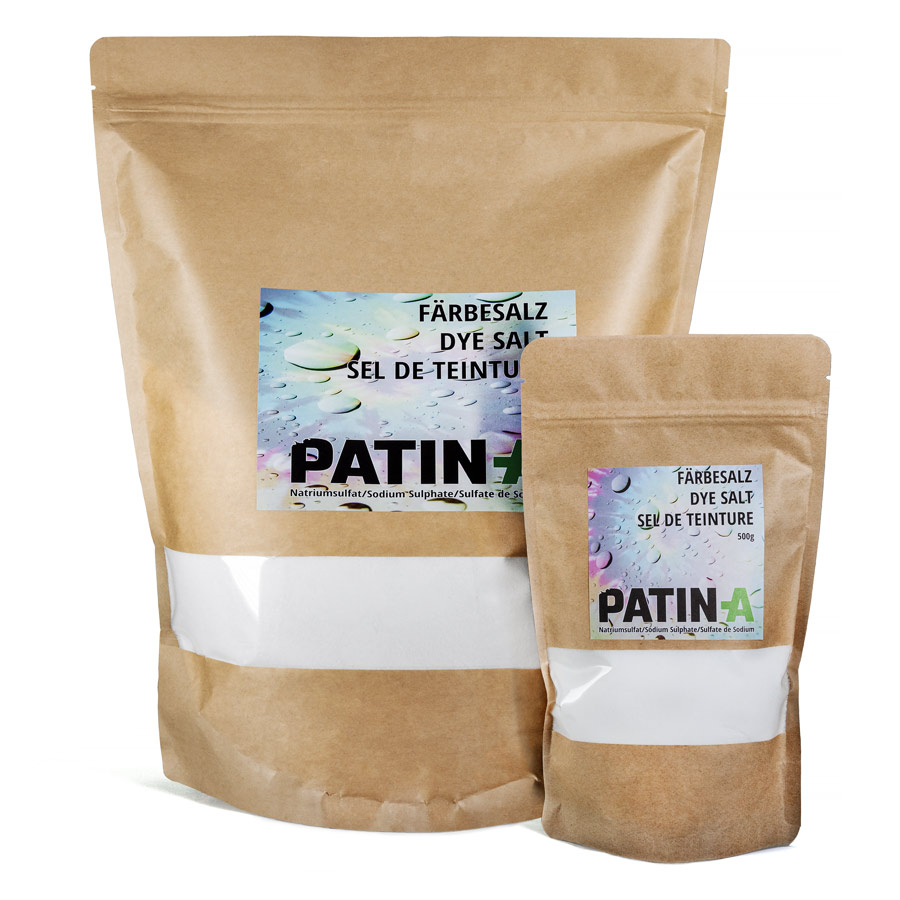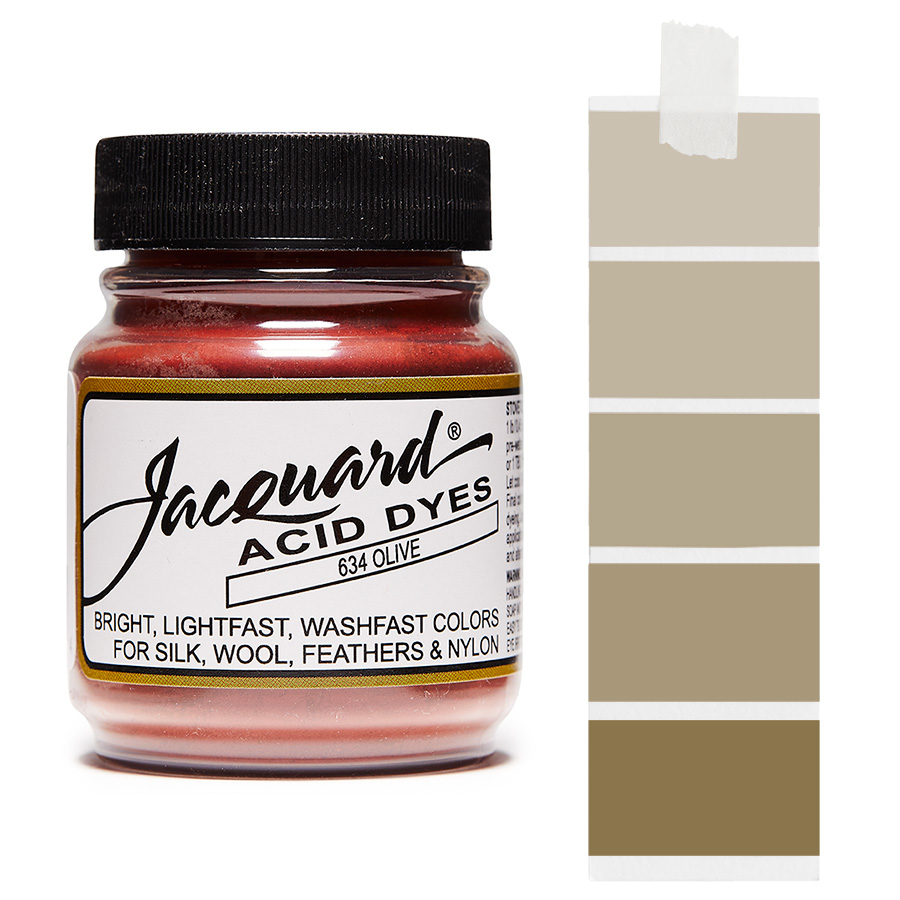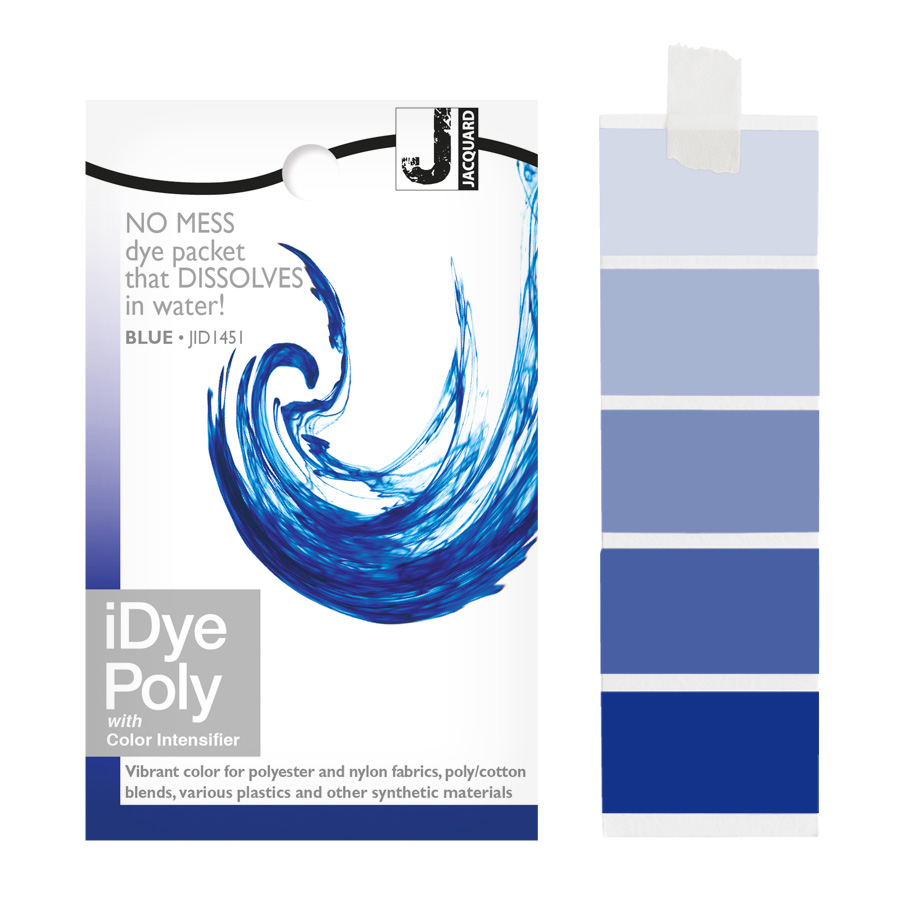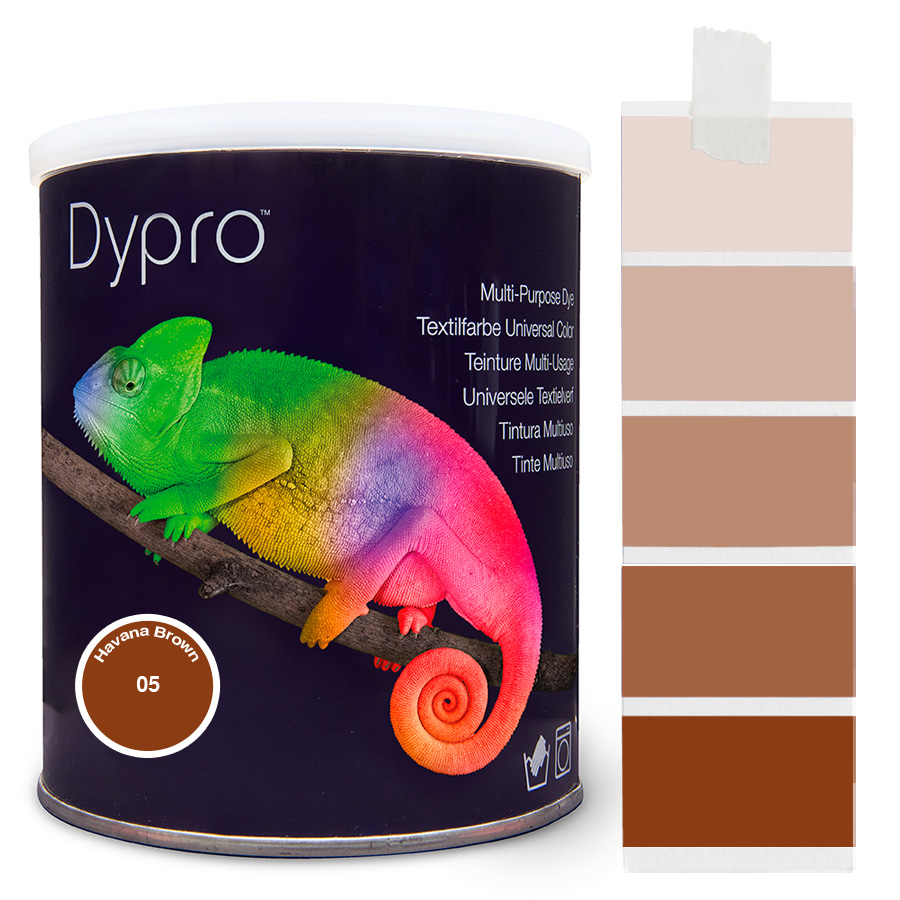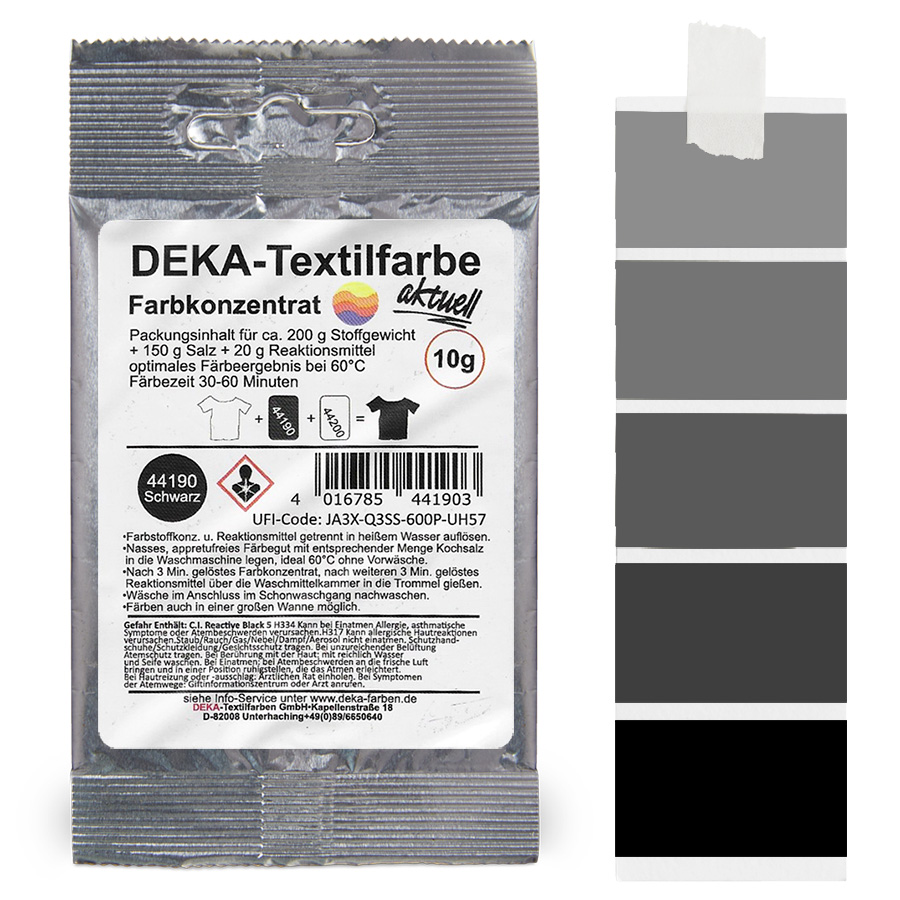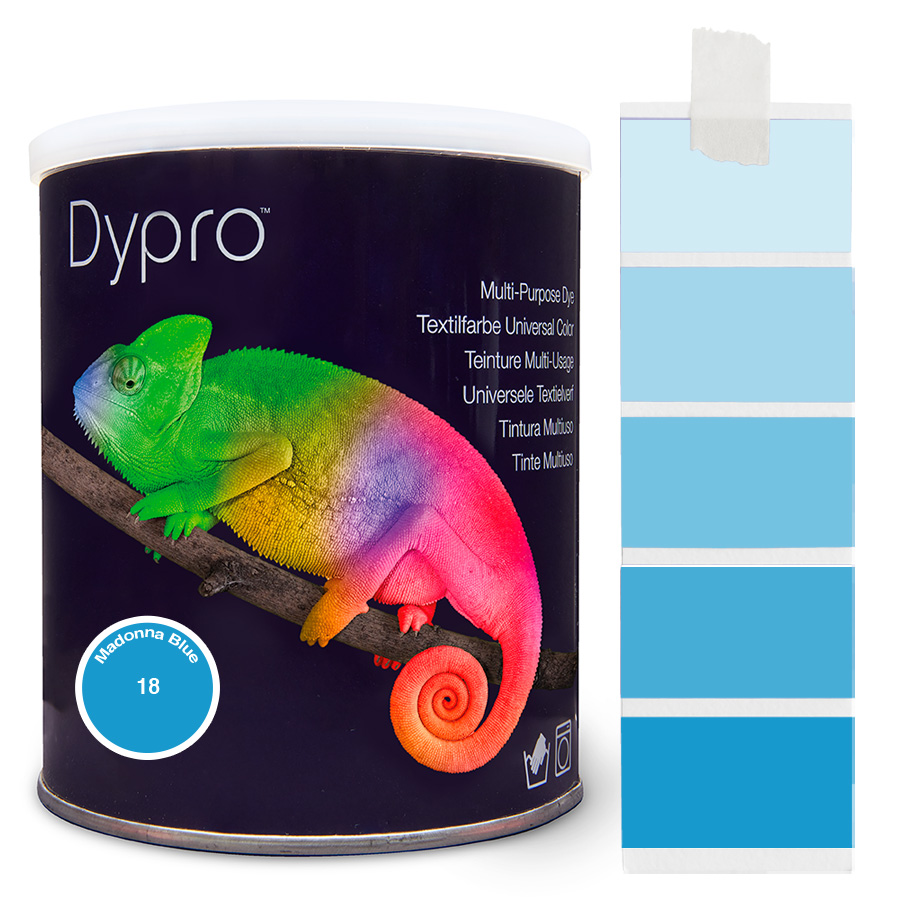Professional Fabric Softener
Available, delivery time: 1-3 days
Professional fabric softener for all textiles
Jacquard Fabric Softener is a highly concentrated liquid softener. It restores the soft touch that dyeing may sometimes remove. It also prevents needle cuttings on knitwear.
Jacquard Fabric Softener is much more concentrated than ordinary softeners.
But of course it can also be used as a perfume free softener with every wash.
Instructions
• Wash the fabric or wool after dyeing.
• After the first rinse add 75ml of fabric softener to 4.5 kg of washing machine load (or 6.5 ml per 5L of water).
• Soak the textiles for 10 minutes in hot water with the softener and then rinse in warm water.
Selling unit: 1 piece (236ml or 946ml)
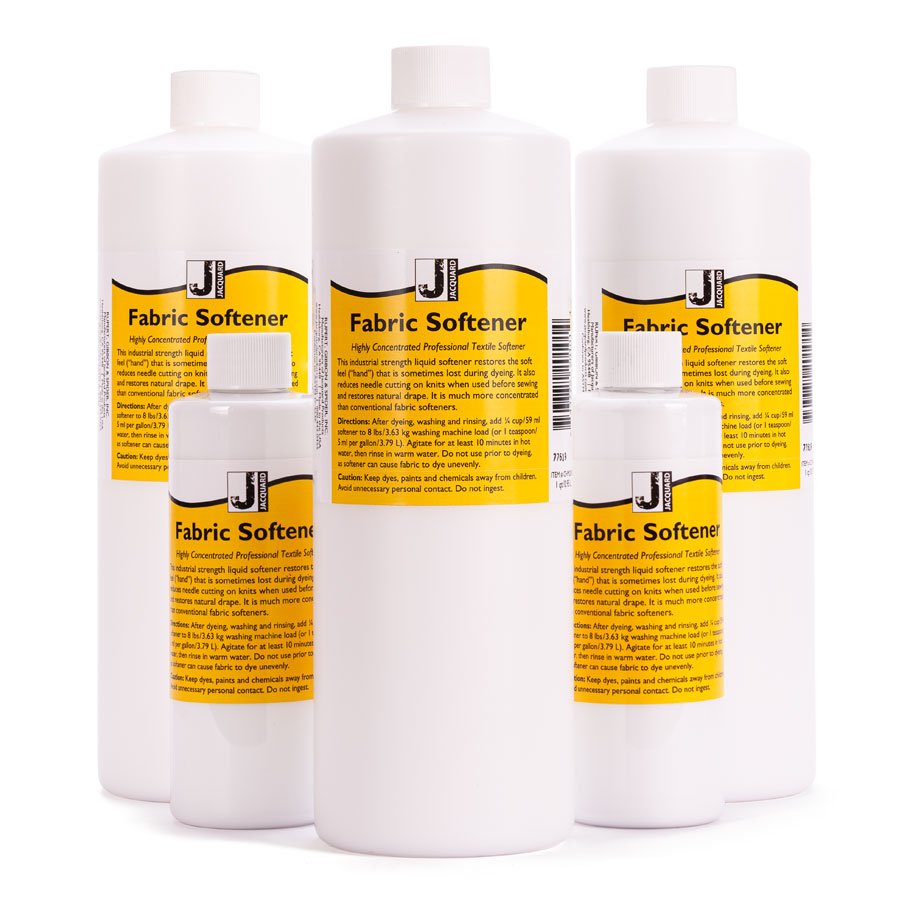
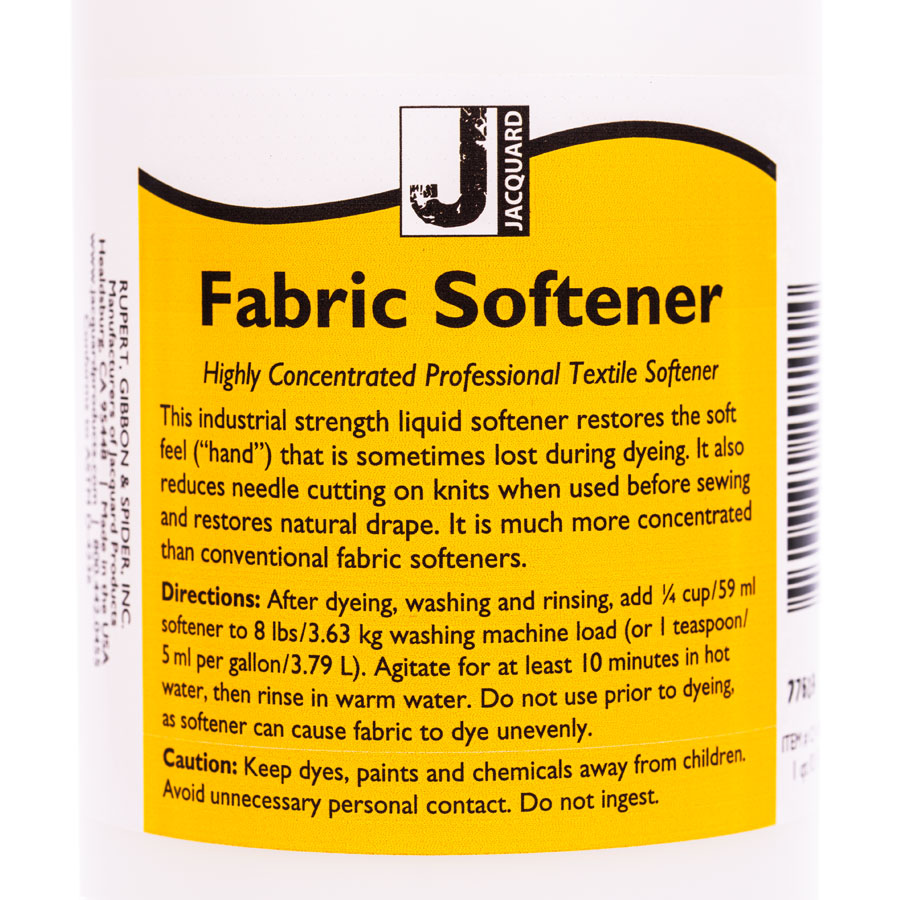
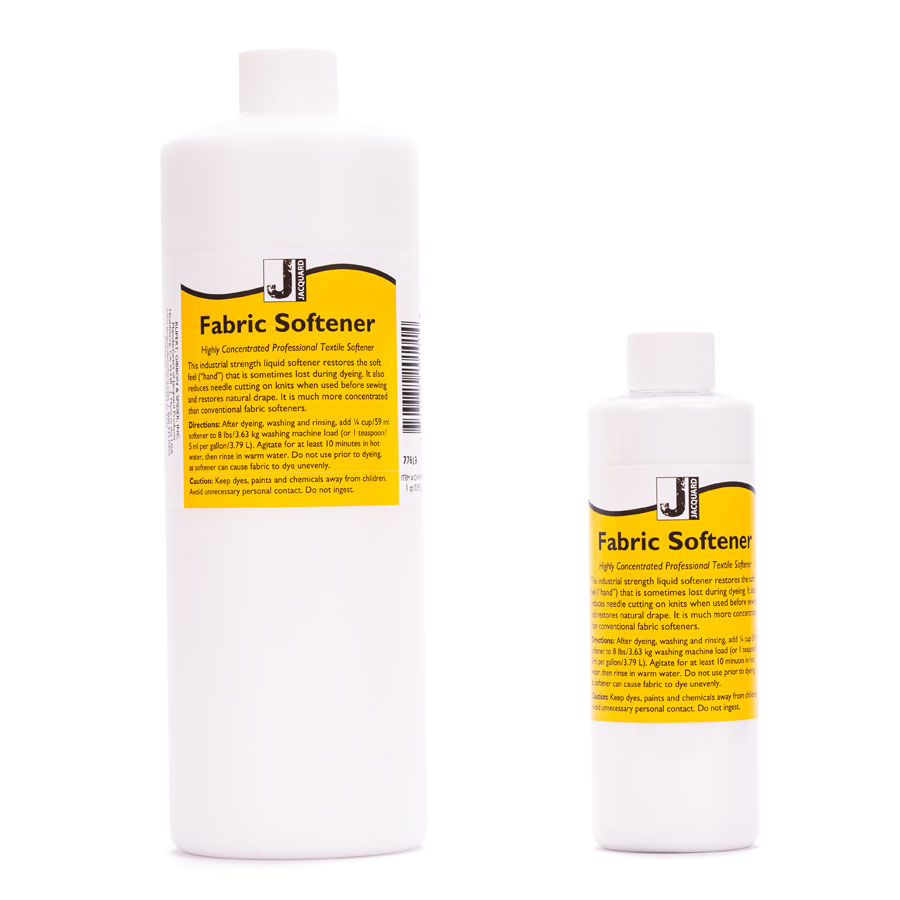
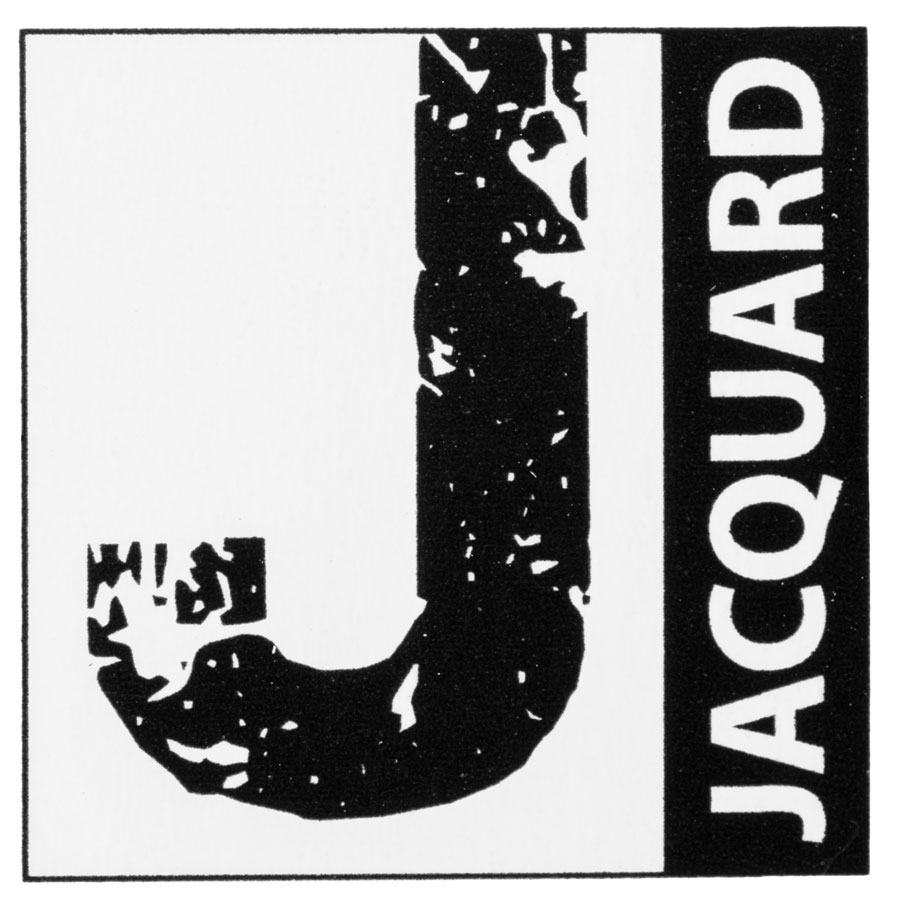
Jacquard iDye Poly - Instructions
Easy-to-use soluble dye packet. For 100% natural fabrics. Dyes 2-3 lbs / 1-1.3 kg of dry fabric.
Results may vary with fabric, temperature of dye bath and duration. Always test first.
Dye bath is safe to pour down drain/septic systems.
Which iDye?
• for 100% natural fabrics use iDye for Natural Fabrics
• for 100% polyester & nylon use iDye Poly
• for fabric blends that contain both natural and synthetic fibers, combine similar colors of iDye for Natural Fabrics and iDye Poly*
For best results:
• Read entire instructions before starting.
• For best results, and maximum color intensity, use stove top method.
• Use constant agitation for uniform color.
NOTE: for lighter shades, use less dye.
Stove top method:
Note: utensils and pot used for dyeing should not be used for food.
1. Fill a stainless steel or enamel pot with enough warm water for the fabric to move freely. Turn heat on medium.
2. Add the iDye soluble dye packet to water and stir until fully dissolved.
3. For cotton, linen and rayon dissolve one cup / 270 g of non-iodized salt in a little hot water and add to dye bath. For silk add 1/3 cup / 78 ml of white vinegar instead of salt. Avoid pouring directly onto fabric.
4. Add pre-wetted fabric and raise temperature to a simmer, just below boiling (185° F).
5. Maintain simmer and stir frequently for ½ hour.
6. Turn off heat and remove fabric from dye bath. Be careful as fabric and dye bath will be hot. Wear gloves as residual dye can stain skin.
7. Wash the fabric with a mild detergent in cool water and dry.
Top loading washing machine method:
1. Fill washing machine with just enough hot water for the fabric to move freely.
2. Add the iDye soluble dye packet. Agitate for 30 seconds or longer until packet is dissolved.
3. For cotton, linen and rayon add one cup / 270 g of non-iodized salt. For silk add 1/3 cup / 78 ml of white vinegar.
4. Add pre-wetted fabric.
5. Extend the dyeing time by resetting the wash cycle before the rinse cycle begins. The longer the dyeing time, the darker the color and better the fixation. We recommend 50 to 60 minutes of dyeing time.
6. Allow the cycle to complete.
7. Wash the garment with a mild detergent in cold water and dry.
Note: Most washers hold some water in their outer tubs at the end of a cycle. Run a short wash/rinse cycle with your normal detergent after dyeing to remove any residual color. If you have hard water in your area it is also a good idea to wipe down the inside of the tub as soap scum can build up and will hold onto dye particles.
Front loading washing machine method:
1. Dissolve the iDye soluble dye packet in approximately two cups of hot water.
• For cotton, linen and rayon dissolve one cup of non-iodized salt in approximately one quart of hot water.
• If you are dyeing silk, then you will use 1/3 cup of white vinegar instead of non-iodized salt.
Note: For front loading machines with a pre-wash flush, add dye between the flush and wash cycles.
2. Pour the dissolved iDye and dissolved non-iodized salt or vinegar into the bottom of the washing machine tub.
3. Add pre-wetted fabric.
4. Set your machine for the hottest possible water temperature and longest possible wash cycle. If you are able to extend the wash cycle, do so. The longer you are able to allow the fabric to remain in the wash/dye cycle the darker the color and the better the fixation.
5. When the machine has completed the wash cycle allow it to complete the balance of the wash/rinse/spin cycle.
6. Wash the garment with a mild detergent in cold water and dry.
Note: We recommend a thorough cleaning of your washer after you have used it to dye fabric. Most front loading washers collect residual water in the front door gasket and will also hold water in the exterior tub. Wipe down the door gasket carefully and run a short cycle with your normal detergent after completing dye process. (You may want to refer to your Washing Machine Users Manual for cleaning instructions.)
*For polyester blends:
1. Choose an iDye Poly color closest to the iDye color you are dyeing and add both packets to dye bath.
2. Follow stove top method. Allow dye mixture to come to a simmer for ½ to 1 hour.
For cotton & silk blends:
If you are doing a cotton and silk blend and don’t know whether to add the salt or the vinegar you have three options:
1. It’s not critical - either the salt or the vinegar will work so just pick one.
2. Don’t add either, but use substantial heat in the dye bath (stove top method).
3. Do two separate dye baths - one with salt and one with vinegar. This will probably be best for darkest colors.
iDye FAQs and Troubleshooting
Can I dye rayon with iDye? How about nylon?
Yes, iDye Natural works great for dyeing rayon (which is essentially synthetic cotton). Nylon must be dyed using iDye Poly.
Is it non toxic?
If used according to the instructions, iDye is safe.
What kind of pots can I use?
Do not use a pot you intend to cook with in the future. Stainless steel or enameled pots work best. Aluminum pots are not recommended, but will work in a pinch.
Will a Teflon pot work?
Yes.
What is the dissolvable packet made of?
PVA (Poly Vinyl Alcohol).
Is the dye bath safe for septic tanks?
Yes.
What is the safest and greenest way to dispose of it?
Dispose according to local and state regulations.
How much fabric will a packet dye?
Up to 3 lbs for deep shades. Much more can be dyed, but the depth of shade will begin to decrease.
For darker colors should I get 2 packets?
It depends on how much fabric you are dyeing and how much water you are using. Darker colors are achieved by using more heat, using less water or using more dye.
I’m worried about shrinkage. Do I have to use hot water? Why?
Yes. Many of the dyes are blends of many colors. Each color strikes at different temperatures with 180°F being optimal. So, to achieve the best and most accurate color possible, hot water is needed. If your fabric cannot withstand high tem- peratures, consider using a cold-water dye like DEKA aktuell or Procion MX.
Do I need to add salt and/or vinegar?
It is not absolutely necessary, but highly recommended for maximum color intensity.
• Salt for cellulose based fibers (cotton, line, hemp, etc.)
• Vinegar for proteins based fiber (silk, wool, feathers, etc.)
What is the salt/vinegar for?
To drive the dye into the fabric.
Can the colors be mixed together?
Yes
What if I want a lighter shade?
Use less dye! Dissolve the dye in a jar and use just what you need. The rest you can save and use next time. You can also cut open the dye packet and pour out just a pinch of powder. Dyeing at lower temperatures is another way to achieve paler colors.
Do I use the iDye Fixative with the iDye Poly?
No. The fixative is only used with iDye Natural. It ensures better washfastness.
Can I save the dye bath and reuse it later?
Yes, but it is not recommended. It is unlikely that the second dyeing will produce the same color as the first, especially when using an iDye color that is composed of multiple dyes. This is because each color in the blend strikes at a different rate, which means the ratio of colors left over in the dye bath will change after the first dyeing. If consistent color isn’t a concern, just remember that you may have to reheat the dye to get the dye back into solution.
After it is mixed in the water, how long will it last?
Indefinitely. However, over time, the dye fill fall out of solution. To re-dissolve the dye will require heat.
Can I airbrush with iDye?
Theoretically, yes, but it is not recommended. Jacquard offers a number of products that are more suited for spraying. Consider using Jacquard CVS dyes or Dye-Na-Flow for airbrushing applications. Contact us so we can make a recommendation.
How do I tie dye a polyester shirt using iDye Poly?
Use the sublimation method or apply dye and then steam at > 212°F. Alternatively, the fabric can be tied and then sub- merged in the boiling dye bath.
How can I paint on fabric using iDye?
It is possible, but not recommended. Consider using Jacquard’s fabric paints or a cold water dye for this application.
If left unopened, how long will it last?
Indefinitely.
The color is bleeding. What did I do wrong?
Maybe nothing! Some colors, like crimson, tend to bleed. To stop this, use the iDye Fixative. The fixative works great to increase the washfastness of any color.
My black came out olive green. What happened?
The dye bath was not hot enough. When using black, it is important to achieve at least 180°F. Sometimes, it may also require a longer dye time.
Why did the fabric not turn out the same as the picture on the packet?
The picture is only an approximation. All fibers will yield slightly different colors. Sometime different fibers can yield dra- matically different colors, too!
I recently used some iDye Poly dye on a clothing item and there is a strong chemi- cal smell left on the fabric. Is there anything that I can do to remove the smell from the fabric?
Wash in HOT water several times with a strong detergent.
What would be the best way for me to achieve a very light shade on a 100% polyester dress?
Use just a portion of the dye in the packet. You can either pre-dissolve the dye in a jar and pour off a small amount, or cut open the packet and carefully scoop out a small amount of powder.
Why does the navy blue iDye for Natural Fibers look like purple when mixed in the water?
Our Navy is a very warm/red navy. At lower concentrations, it will dye a purplish color. However, at high concentration, it’s a beautiful warm navy blue. The red component has a lower strike rate than the other components. So it has to have more red to get the warm tones of navy. This makes it look purple in solution. Remember that the color of a dye bath (the color of dye in solution) will always be slightly different than the color it produces on fabric.
I just used the iDye Color Remover on a pair of store-bought jeans. After 40 minutes on the stove (just below boiling and CONSTANT stirring) they are the same color!
Not all dyes are dischargeable. The Color Remover is effective at removing iDye colors from natural fabrics, but it is not guaranteed to work on other dyes. Test first!
I have just finished using stainless steel pots to stovetop dye some fabric. If they are washed thoroughly, can I use them to cook with again?
No. Pots or utensils used for dyeing should NOT be used for food.
What do you suggest for ensuring that iDye colors do not leach into washing machine interior plastic hulls?
Either pre-dissolve the packets before adding the dye to the washing machine, or run several washes after the dye job, using HOT water and bleach.
Will iDye for Natural Fabrics work in a front loading washing machine?
Yes, you can watch a video on how to do it here: https://vimeo.com/jacquardproducts/idye
Can I use iDye Poly in the washing machine?
No, iDye Poly requires very high temperatures. It should only be used on the stovetop.
I dyed a cotton garment using iDye for Natural Fabrics but all the threads remained white. What happened?
The threads used to stitch commercial garments are often made of polyester, which will be untouched by iDye for Natural Fabrics. To color the threads at the same time as the garment, mix the same colors iDye Natural and iDye Poly in the dye bath and use the stovetop method.
I dyed a synthetic garment with iDye Poly and even the buttons took the color. What happened?
iDye Poly will color just about anything synthetic, including plastic buttons.
<h3>We answer more questions around the topic of 'dyeing' here: </h3>
<p>• You will find detailed dye instructions here : <strong><a title="Dypro (Dylon) Anleitung für Färbungen - Textil und 3D" href="https://www.patin-a.de/faerbeanleitung-fuer-dypro" target="_blank">iDye Instructions <br /></a></strong>• Or have a look at our blog: <strong><a title="Blog: FAQ zum Färben von Stoffen" href="https://www.patin-a.de/blog/faqs-zum-faerben-mit-textilfarben" target="_blank">FAQs about dyeing with textile dyes </a></strong></p>
Login
May 1, 2020 12:15
Weichspüler
Ich habe jahrelang keinen Weichspüler eingesetzt, da mir die Parfümierung der Kleidung nicht gefiel. Eine Freundin empfahl mir diesen unparfümierten Weichspüler und ich bin sehr begeistert. Die Kleidung wird sehr weich dadurch und fühlt sich sehr angenehm an.
 We ship worldwide
We ship worldwide Top customer satisfaction!
Top customer satisfaction! Many payment options
Many payment options
